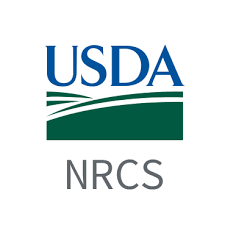
USDA Natural Resources Conservation Service
WASHINGTON, May 13, 2020 – Conservation practices are working to reduce runoff, improve soil quality, and mitigate contaminants in small watersheds across the country, according to USDA’s scientific findings published yesterday in the Journal of Soil and Water Conservation. USDA’s Natural Resources Conservation Service (NRCS) and Agricultural Research Service (ARS) collaborated with universities and other agencies and organizations to complete the water-quality studies featured in the journal through USDA’s Conservation Effects Assessment Project (CEAP).
“The scientific findings in this special issue of the Journal of Soil and Water Conservation show that conservation programs work,” said NRCS Chief Matthew Lohr. “The programs improve water and soil quality, and these scientific studies have also taught us how to improve our programs in the future.”
“ARS is home to some of the greatest scientific minds in agriculture. This special issue is a result of their authoritative and revolutionary work and our collaboration with partners over the years,” said ARS Administrator Chavonda Jacobs-Young. “Science-based research and innovation makes the difference in achieving positive outcomes such as these.”
The issue includes 15 peer-reviewed research papers and two feature articles, one analyzing results from watershed studies spanning 15 years of CEAP assessments in watersheds. The impacts measured include reduction of sediment and nutrients lost in runoff, improvement in soil quality and improved understanding of conservation practices to mitigate contaminant losses. Practices were assessed at plot, field, edge-of-field and watershed scales and included drainage management, conservation tillage, cover crops, buffers, irrigation, nutrient management, water management and Conservation Reserve Program (CRP) practices.
Some examples of results include:
- In the Central Mississippi River Basin, combining no-till and cover crop practices reduced sediment losses by 87% and nitrate losses by 57% on a monitored field due to changes in soil moisture, timing of nitrogen applications and use of cover crops (Baffaut et al. 2020).
- In the Western Lake Erie Basin, edge-of-field monitoring revealed that subsurface placement of fertilizer in tile-drained fields reduced dissolved phosphorus losses by 66% (Williams et al. 2018). In addition, an innovative conservation practice was developed to treat contaminant losses from drainage water – replacing tile risers with blind inlets. This new practice reduced sediment losses by about 78% (Smith and Livingston 2013), total phosphorous losses by 66% and dissolved phosphorus losses by 50% (Feyereisen et al, 2015).
- In the Choptank Watershed in the Chesapeake Bay, novel satellite remote sensing techniques were developed and evaluated, along with program data, to assess the extent of cover crop implementation over an 8-year period (2008-2016). These techniques documented a 62% increase in winter cover crop use in corn fields and a 37% increase in soybean fields in a sub-watershed. In addition, modeling results indicate that this cover crop adoption led to a 25% reduction in nitrate leaching from cropland over a 10-year period (2008-2017) (Hively et al. 2020).
The USDA spends about $6 billion per year on agricultural conservation programs to help producers and landowners implement suitable conservation practices and systems on their land. In 2003, NRCS, ARS and other agencies created CEAP to quantify the environmental effects of conservation practices and programs and to develop the science base to effectively manage the agricultural landscape for environmental quality.
The feature article presents a brief synopsis of CEAP research impacts mainly in ARS Benchmark and NIFA-CEAP watersheds and highlights some key CEAP-developed practices, tools and technologies.
For more information on the special issue, visit https://www.jswconline.org/content/75/3  or attend the upcoming webinar on May 28. For more information on CEAP, visit nrcs.usda.gov, view our CEAP Storymap
or attend the upcoming webinar on May 28. For more information on CEAP, visit nrcs.usda.gov, view our CEAP Storymap  or contact your local NRCS field office.
or contact your local NRCS field office.
